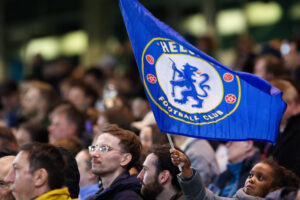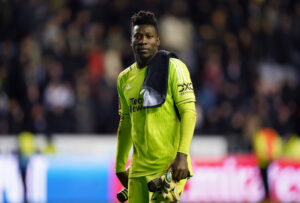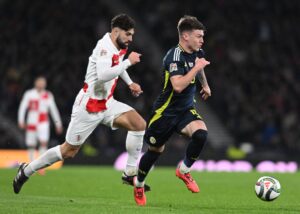To mangle Oscar Wilde’s most famous quotation, “To secure one 1-0 away win in a week could be considered fortunate; to secure two begins to look like better defending”. So it is with Arsenal. After failing to achieve a significant away win in either the Premier League or the Europa League in the first three months of 2019, this week they have achieved two in a matter of days.
Arsenal Defence Finding Form Away From Home
Some Luck, Some Skill
The win against Watford in the Premier League was, by any measure, fortunate. Despite playing with only 10 men for the vast majority of the game after Troy Deeney was sent off, Watford still troubled Arsenal. They twice hit the woodwork as they fought for an equaliser after Pierre-Emerick Aubameyang’s fortuitous opening goal.
However, against Napoli in the Europa League quarterfinal second leg, Arsenal were not lucky. Instead, they were simply incredibly effective, first nullifying the home team and then striking decisively through Alexandre Lacazette’s superb free kick, which gave the Gunners a 3-0 aggregate lead and effectively killed the tie.
What will be most pleasing for Unai Emery, the Arsenal manager, is that his team have not only won two potentially tricky away games in swift succession but in the process achieved two clean sheets. Against Watford, Arsenal finally got a King Kong-sized monkey off their back by keeping an opponent scoreless in an away game for the first time in the Premier League all season, even if there was a fair amount of luck involved. Then, just over 72 hours later, they travelled to Naples and repeated the trick against opposition that was supposedly superior to Watford.
Formation
The key to Arsenal’s sudden improvement in away form is surely their greatly improved defending away from home. Much has been made of Emery’s recent switch to a 3-5-2 formation, with three central defenders and two attack-minded wingbacks. Rather less has been made of the exact composition of that three-man central defence.
Against Napoli, Laurent Koscielny, the club captain, again proved that his presence at the heart of Arsenal’s defence improves the Gunners’ defensive solidity by at least 50%. Next season will mark a full decade at Arsenal for the Frenchman. Nevertheless, he easily remains Arsenal’s calmest and – crucially – fastest central defender. Napoli did less than Watford to threaten Arsenal’s goal. Nevertheless, what little attacking threat they did present was largely snuffed out quickly by Koscielny.
Alongside Koscielny, Sokratis showed again that currently, he is by far the best candidate to play alongside Koscielny. Like Koscielny himself back in 2010, the Greek centre-back made a relatively shaky start to his Arsenal career, demonstrating little to suggest that he was the long-term solution to Arsenal’s long-standing weakness in central defence. However, he has improved dramatically since the turn of the year and now his presence alongside Koscielny is more reassuring than alarming for Arsenal fans.
The third man in Arsenal’s defensive triumvirate is Nacho Monreal. Since the end of the 2016/17 season, when Arsene Wenger first switched to a formation with three central defenders, Monreal has played far more often as a third centre-back than he has as the orthodox left-back that Arsenal originally signed him as. Like Koscielny, he is now a vastly experienced defender who can use his impressive reading of the game to counteract the obvious reduction in pace that increasing age brings.
Age Issue
The problem for Arsenal in the long term is that all three of these central defenders are over the age of 30: Koscielny will be 34 in September; Sokratis will be 31 in June; and Monreal turned 33 in February. Consequently, it is unlikely that the three of them can continue to form the Arsenal rearguard for much longer than another season, or two at most.
Of course, Arsenal do have some much younger centre-backs. The pick of them is obviously Rob Holding, who is still only 23. Prior to his injury against Manchester United just before Christmas, Holding had been a contender for the “Most Improved Arsenal Player Under Emery” Award, alongside Alexandre Lacazette, and hopefully when he returns to the team next season he will continue to show that improved form.
There is also Calum Chambers. Chambers seems to have been around at Arsenal forever, having signed for the club from Southampton nearly five years ago. Nevertheless, he is yet to play even 50 games for the Gunners. He has certainly had a lot of defensive practice in his two season-long loan spells at Middlesbrough and Fulham (both of which ended in relegation) and that will surely stand him in good stead when he returns to Arsenal next season. As Chambers will be 25 next January, Emery will surely give him one last chance to prove his worth at Arsenal.
However, despite the improvements in the existing Arsenal centre-back trio, both individually and collectively, and the promise that still exists in the form of Holding in particular, there is no doubt that Emery’s biggest challenge this summer will be to find the long-term replacement for Koscielny, both as a central defender and a captain.
Replacement Needed
Perhaps the answer to the question of who will replace Koscielny was on the field in Naples, in the form of Kalidou Koulibaly, Napoli’s French-born but Senegal-affiliated centre-back. Napoli were generally disappointing against Arsenal, demonstrating why, if they are the second best team in Italy, Juventus are about to win their eighth successive Serie A title.
Nevertheless, despite being harshly adjudged to have scored an own goal in the first leg against Arsenal (the goal really should have been given to Lucas Torreira, whose shot Koulibaly deflected past his goalkeeper), the centre-back was easily Napoli’s most impressive player over the two legs.
Koulibaly is fast, strong, good in the air and crucially is still only 27 years old, making him the ideal age to replace the ageing Koscielny and play alongside the younger Holding or Chambers. It has long been rumoured that he will be the next “superstar centre-back”, after Virgil van Dijk, with a transfer fee to reflect that status.
Consequently, if he is available for transfer this summer, it will certainly not be easy, or cheap, for Arsenal to acquire him. However, Arsenal only need to look at how the signing of Van Dijk has transformed the entire defence at Liverpool to see the difference that even one top-class centre-back can make.
Looking Ahead
For now, though, that is all for the future. Arsenal’s immediate challenge is to see off Crystal Palace on Sunday. Although the Gunners will be delighted to play at home again after two successive away games, Palace are exactly the kind of team who can cause Arsenal’s new formation problems, because their pair of wingers – Wilfried Zaha and Andros Townsend – can exploit the space on the flanks that Arsenal’s wingbacks leave when they maraud forwards.
After that, Arsenal will have just four more away games before the end of the season, at Wolves, Burnley and Leicester City in the Premier League and at Valencia in the Europa League semi-final. Although each one of those games, particularly Wolves and Valencia, will be far from easy, Emery has, at last, demonstrated that he can ally some defensive solidity to Arsenal’s undoubted attacking flair, especially away from home.
Main Photo
Embed from Getty Images






